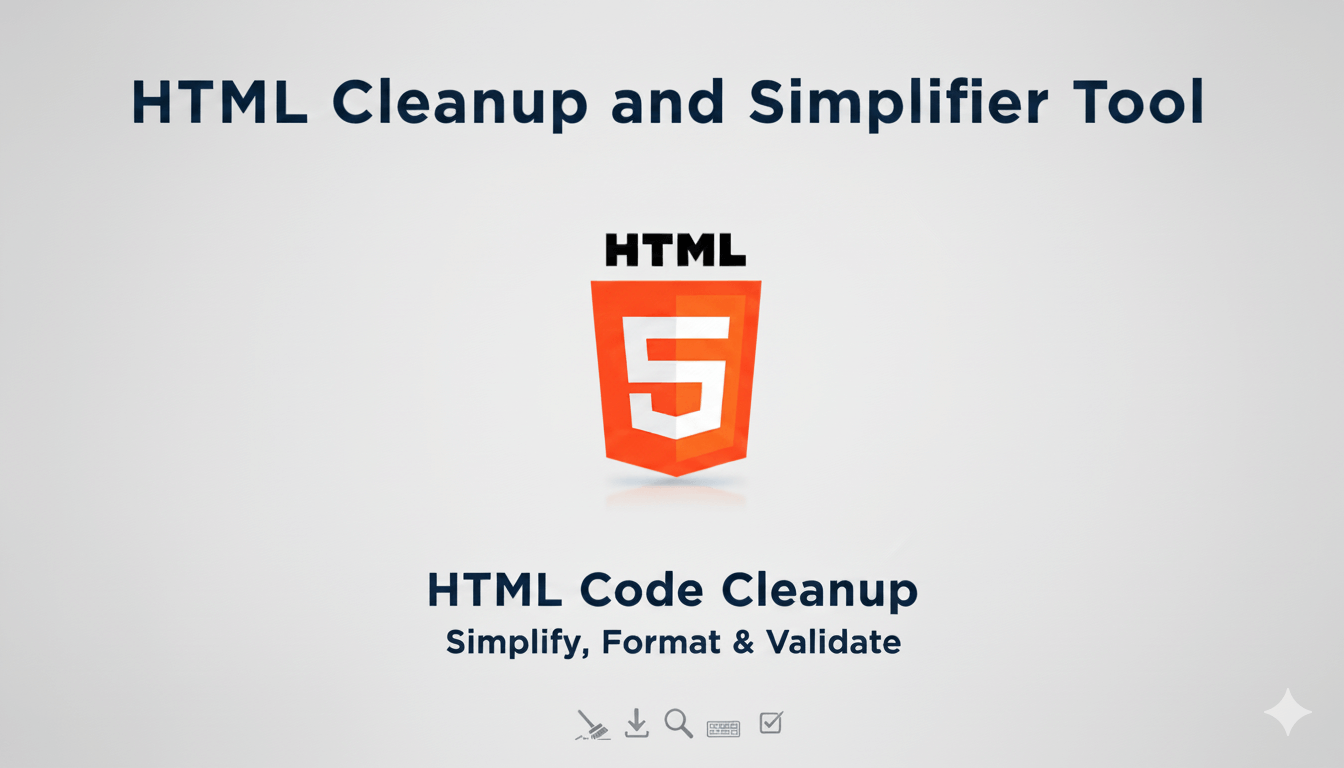HTML Cleanup and Simplifier Tool
Strip bloat, fix errors, and format your markup for cleaner web standards.
Cleanup Options
Input HTML (Paste Messy Code Here)
Cleaned & Formatted HTML
The Ultimate Guide to Clean & Simple HTML
Transform bloated, inefficient markup into lightweight, SEO-optimized source code. This interactive guide explains why clean code is critical and shows you how to achieve it.
The Problem: Why "Dirty" HTML is an SEO Killer
Bloated code isn't just ugly; it actively harms your site's performance and search engine rankings. This section explores the common causes and the severe consequences for your Core Web Vitals and SEO.
The WYSIWYG Catastrophe
Content editors from platforms like Word or Google Docs are notorious for injecting "bloat code"—unnecessary inline styles, meaningless `` tags, and proprietary markup that inflates file size and complicates your DOM.
Bloated Code Example
<p class="MsoNormal">
<span style="color:red;">
Some text.
</span>
</p>Clean Code Result
<p>Some text.</p>Impact on Core Web Vitals
The Solution: Key Cleanup Features
A powerful HTML cleaner uses advanced techniques to surgically remove bloat without breaking your content's structure. Explore the core features below to understand how each one contributes to a cleaner, faster website. Click on a card to see details.
In-Depth Benefits of Clean HTML
Beyond surface-level tidiness, clean code provides critical advantages for performance, SEO, and long-term maintainability. This section explains how a simplified DOM and proper standards compliance directly impact your bottom line.
Boosting Rendering Performance
By removing inline styles and empty tags, you optimize the Critical Rendering Path, reduce memory/CPU load, and accelerate content display (FCP), leading to a smoother user experience.
Creating "Machine-Friendly" Markup
Clean code increases your Text-to-HTML ratio, helping Googlebot quickly identify core keywords. It also promotes Semantic HTML, which clarifies content structure for search engines.
Ensuring Web Standards Compliance
Stripping inline styles and events enforces "Separation of Concerns," making your code easier to maintain and scale. Clean HTML is also the perfect input for minification and other build tools.
How-To Guide: 3 Simple Steps to Clean HTML
Achieving perfectly clean code is a frictionless process. Follow this simple guide to transform your markup.
Paste Your HTML
Copy the chaotic code from your editor, document, or email and paste it into the cleaner's input area.
Select Cleanup Options
Customize the cleaning process. For maximum SEO benefit, enable options like removing styles, classes, and unwrapping `` tags.
Clean, Format & Copy
Click the button to process the code. The clean, indented output is ready to be copied and integrated into your project.
Advanced Optimization Techniques
After cleaning your HTML, apply these professional techniques for peak performance and accessibility.
File Size Optimization ▼
Minification: Use a minifier to remove all whitespace and newlines from your final code, which can shave off an additional 10-20% of file size.
Server Compression: Ensure your web server is configured to use Gzip or Brotli compression, the most important step for minimizing transfer size.
Semantic CSS & Optimization ▼
CSS Tree Shaking: Use tools like PurgeCSS to remove unused CSS rules from frameworks like Bootstrap or Tailwind, ensuring only the necessary styles are loaded.
Lazy Load CSS: Load critical, above-the-fold CSS first, and defer the rest to improve initial page render speed.
Accessibility (A11y) Compliance ▼
Alt Attributes: Ensure all `` tags have descriptive `alt` attributes for screen readers and SEO.
Heading Structure: Use `
